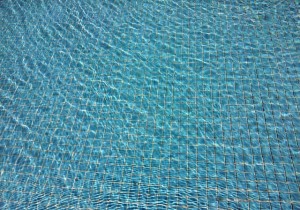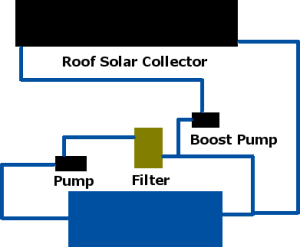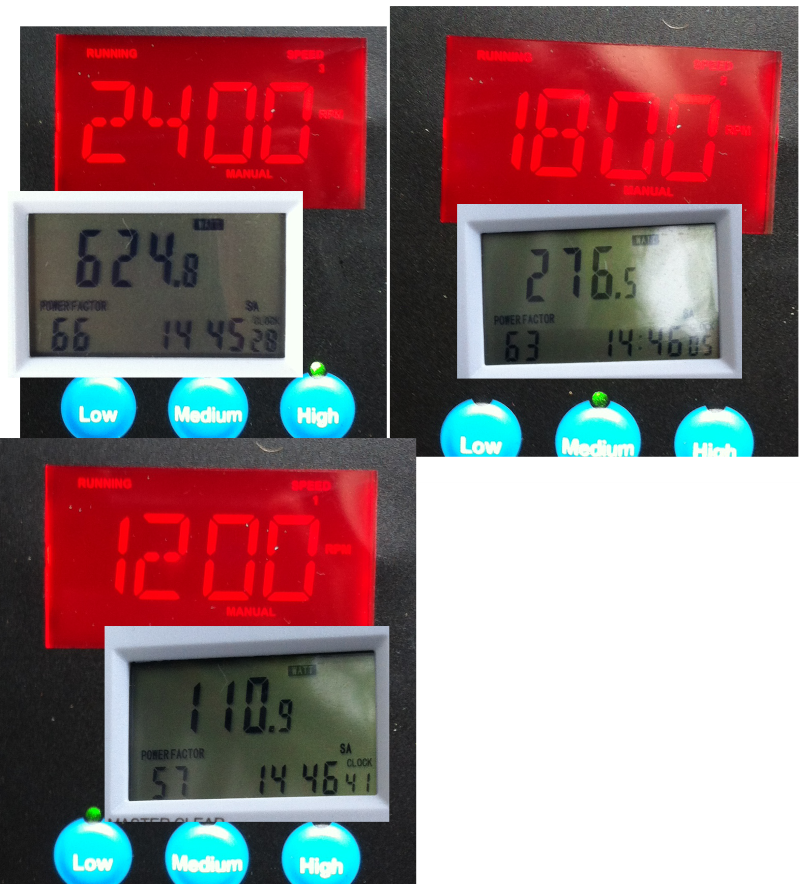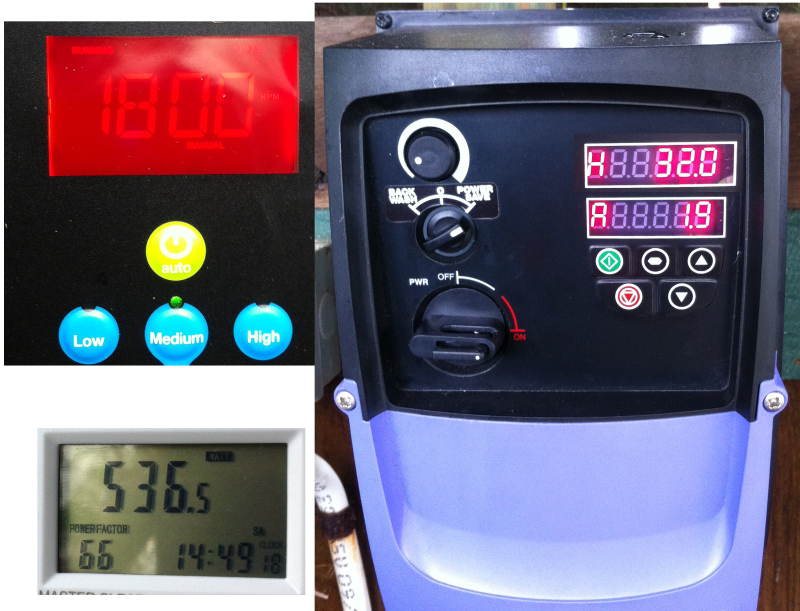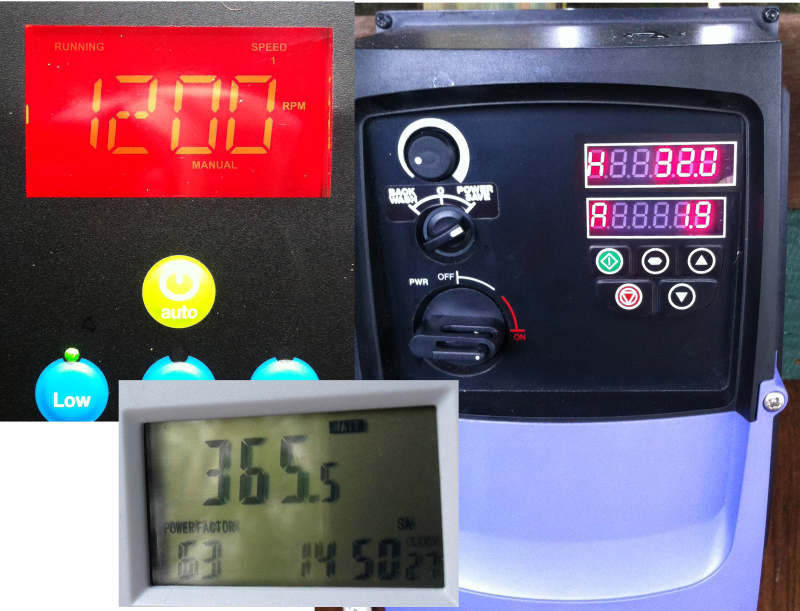Up front: savings in energy likely to be over 1 kW; was 1.7 kW to run the 2 x pumps, now likely to be 530 W and possibly as low as 365 W for both.
Let me explain what I’ve worked through and how I’ve done it – all off the shelf but you obviously need to look at your own setup and do your own calculations.
Anyone that owns a pool knows that it is high on the list after the air conditioner in eating energy; I also happen to have 3kW of solar on the roof and it dawned on me a while back that when the pool filter and heating pump’s are running during daylight hours I’m not exporting power at all and only reducing my consumption.
So here is my pool plumbing basic diagram, I’ve left off controllers and non return valves in the interests of simplicity
When normally filtering one pump is running and when there is sufficient heat and the pool needs heating the solar controller kicks in and circulates the the water through the collector on the roof.
I got out the trusty power meter and measured the 2 pumps before the change to see what difference it would make
So you can see from above that the main pump was drawing 875 W and the boost pump 821 W, I plugged them both in and got confirmation of about 1700 Watts to be filtering and heating my pool.
So what did I do? I’ve been fine tuning the system for a while and have recently updated to the Viron eQulibrium salt water chlorinator. It was time to go the whole way and add the chlorine sensor and the P320 pump to let it run in full auto mode and manage my pool for me.
I’ve also had a bee in my bonnet about the solar boost pump, the flow to the roof was managed in classic HVAC style, oversize the pump and then throttle the flow to what was needed. This meant that the pump consumes full power to give less than full flow – my engineering brain was somewhat offended by this.
My research turned up a couple of options, the one I’ve used is an Invertek Pool Pump Energy saver based on their E2 range, you may need to hunt around to find one. Mine came from Ideal Electrical; the other option I turned up was from Future Wave Energy which does pretty much the same thing.
I wanted to fiddle with mine, and possibly in the future add sensors so I went the Invertek as it has that capability.
So I changed the CX240 for the P320 and put the Invertek drive between my solar controller and the pump and lit everything up.
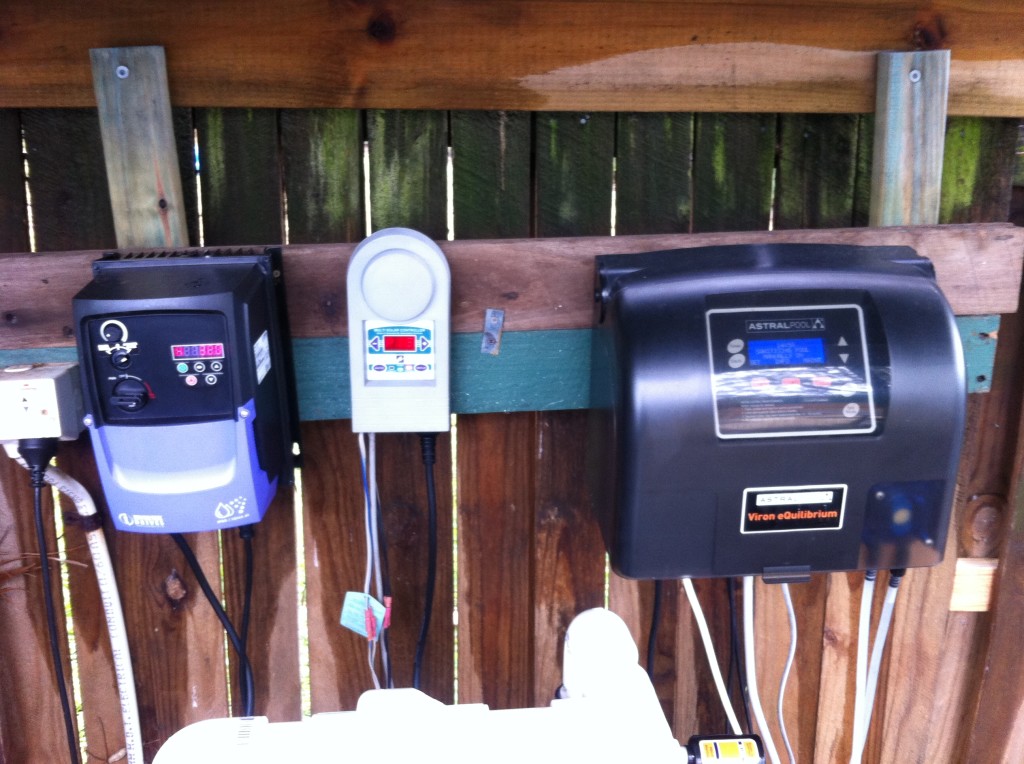
The way the system works is the eQulibrium controller on the right is in charge, it starts the main pump at high speed for purge and after a couple of minutes drops it back to medium (driving the kreepy krauly), once it has turned over the pool 1.5 times it drops to low and samples the water with the pH and chlorine sensors and will wind up to medium and add acid and make chlorine if required.
The solar controller in the middle measures the pool and roof temp and decides if we need heat, it then fires up the invertek which runs the existing CX180 drive at the correct speed for the solar heating – thanks to the guys at www.poolheating.com.au the suppliers of my solar system who were happy to tell me how to tune the flow needed.
So the numbers – first the P320 in High, Med, and Low at the settings I need for my pool:
Now the boost will be working alongside the Medium or Low speeds so here are those. First the medium set up, yes I edited on the Hz to the drive image, but we have medium P320 and Boost at 32 Hz is 1.9 A giving 536 Watts total compared to 1700 watts original for filter and boost.
If you look back up the top you will see the usual filter only was over 800 Watts so the solar boost is more than free 😀
and the low speed numbers giving 365 W once the pool has turned over 1.5 times but still needs heating.
We wouldn’t be complete without a comparison table so here goes:

So, it’s been a bit of a journey, hopefully the above is of use to some of you out there in helping to minimise the energy demand of your swimming pool.
Once you start understanding the most efficient way to run the pump is adjusting the pump and not the water it’s amazing what you can do for your energy efficiency!
